

Join BirdNote tomorrow, November 30th!
Illustrator David Sibley and actor H. Jon Benjamin will face off in the bird illustration battle of the century during BirdNote's Year-end Celebration and Auction!
Congratulations to all of the winners of BirdNote's 20th Birthday Photo Contest!
Check out the top three winning submissions in both the General Bird Photography and Conservation Actions categories below. Thank you to everyone who participated in this year's contest!
General Bird Photography
First place: Christopher Baker, Mallard Duck

"Mallard ducks bathe by quickly and repeatedly dunking their head and bodies in the water. I love to utilize a fast shutter speed (1/2000 sec) to freeze the water as it rolls off its waterproof feathers. The early morning sunrise provides beautiful side light to bring out the colors in the iridescent feathers on the mallard's head. I shot this with a Nikon Z9 and Nikon 800mm f/6.3 PF lens. This relatively lightweight setup allows me to shoot handheld and photograph from lower perspectives." —Christopher Baker
Second place: Andy Raupp, Cedar Waxwing
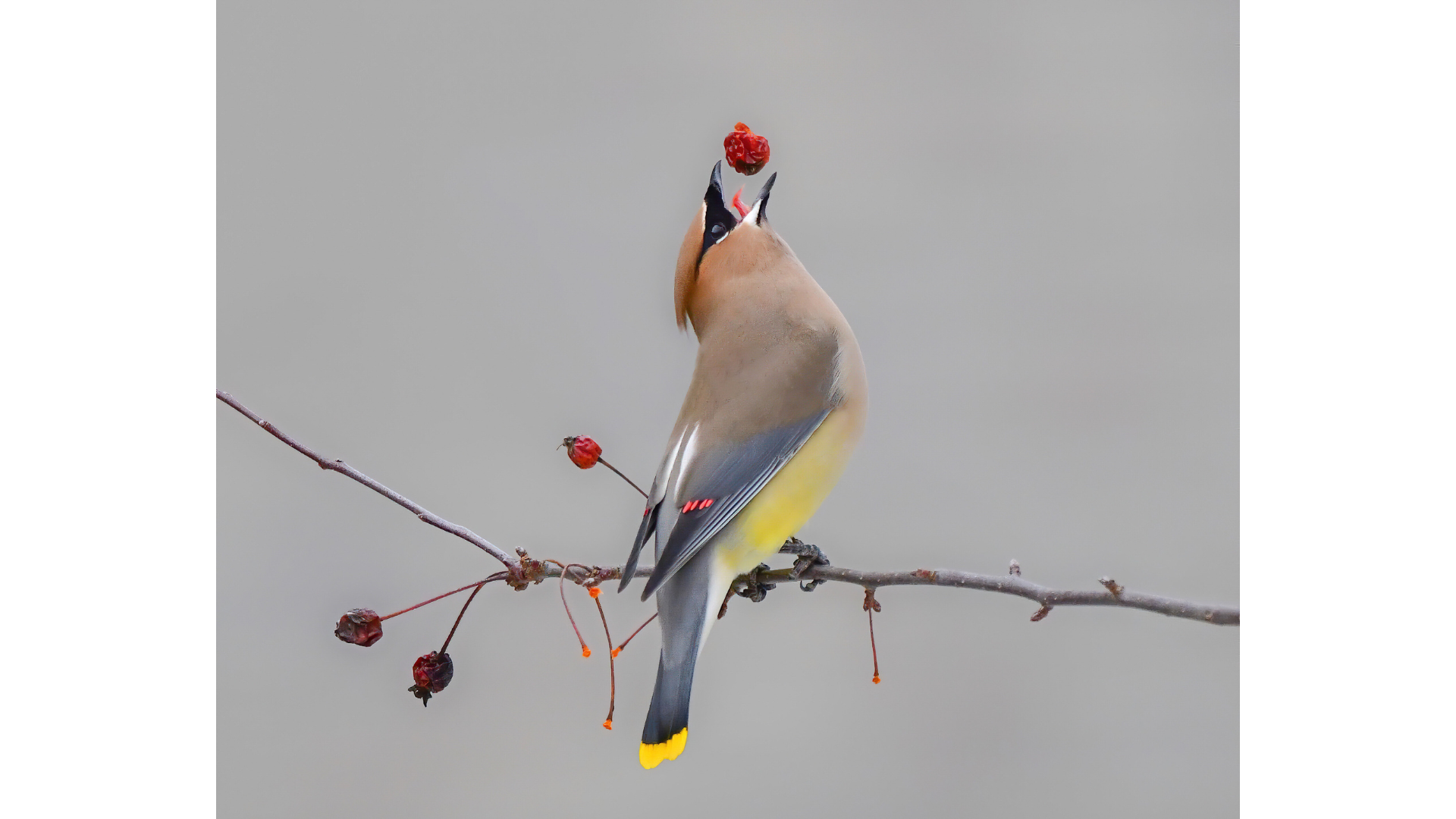
"I was headed out to one of our local parks to go birding one winter morning when I got in my car and saw a huge flock of Cedar Waxwings feeding on a crabapple tree on our road. There must have been over 50 cedar waxwings bouncing around the tree and eating all of the crabapples. I was thrilled to capture this image of one of the waxwings tossing up a crabapple right before it ate it!" —Andy Raupp
Third place: Mike Henry, White-winged Dove
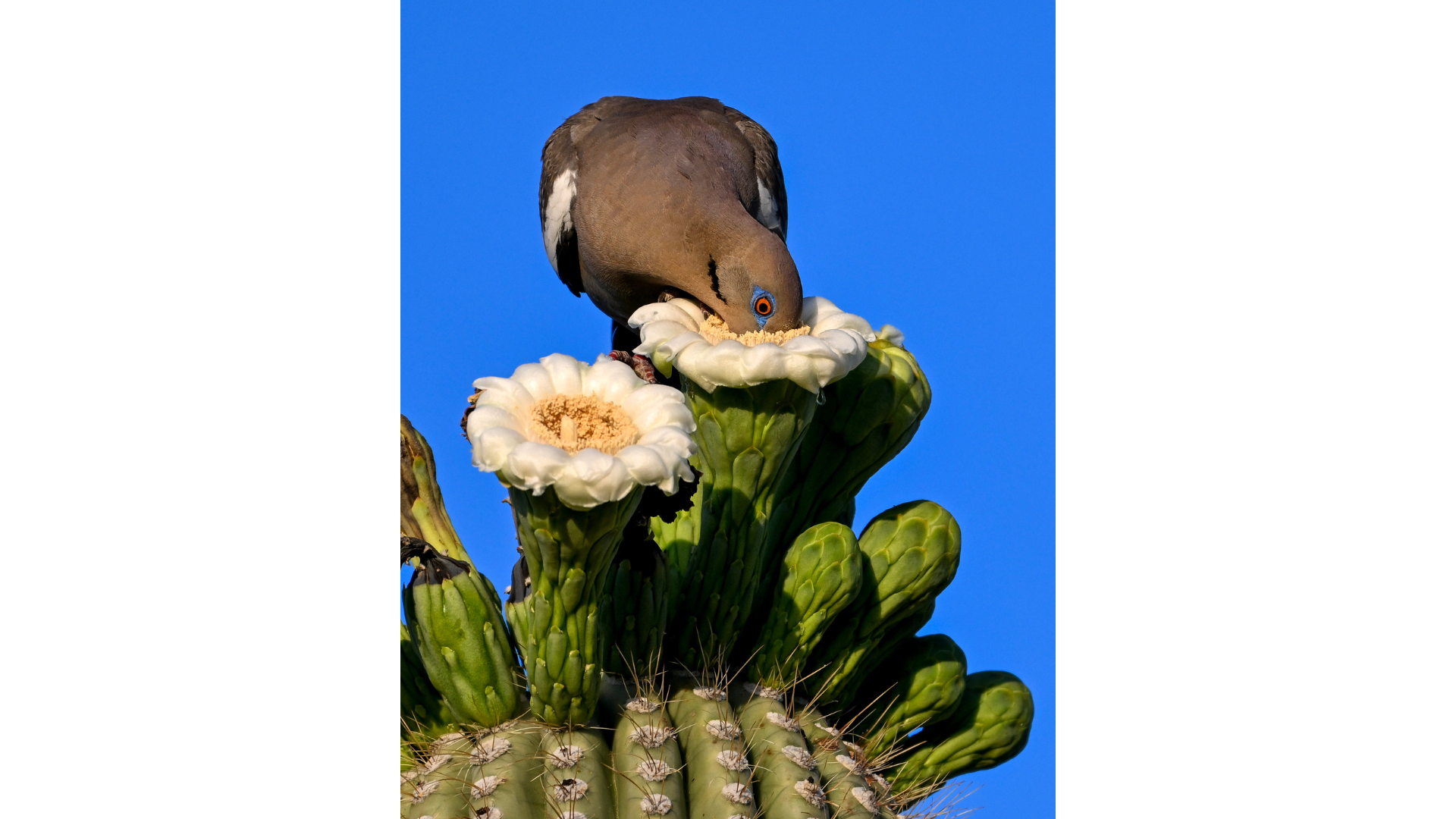
"Many birds depend on Saguaro blossoms and they start blooming in the desert starting in April. I photographed this White-winged Dove "lost in the sauce" while sampling a lovely blossom." —Mike Henry
Conservation Actions
First place: James Shane, Boise State University's Raptor Research Center
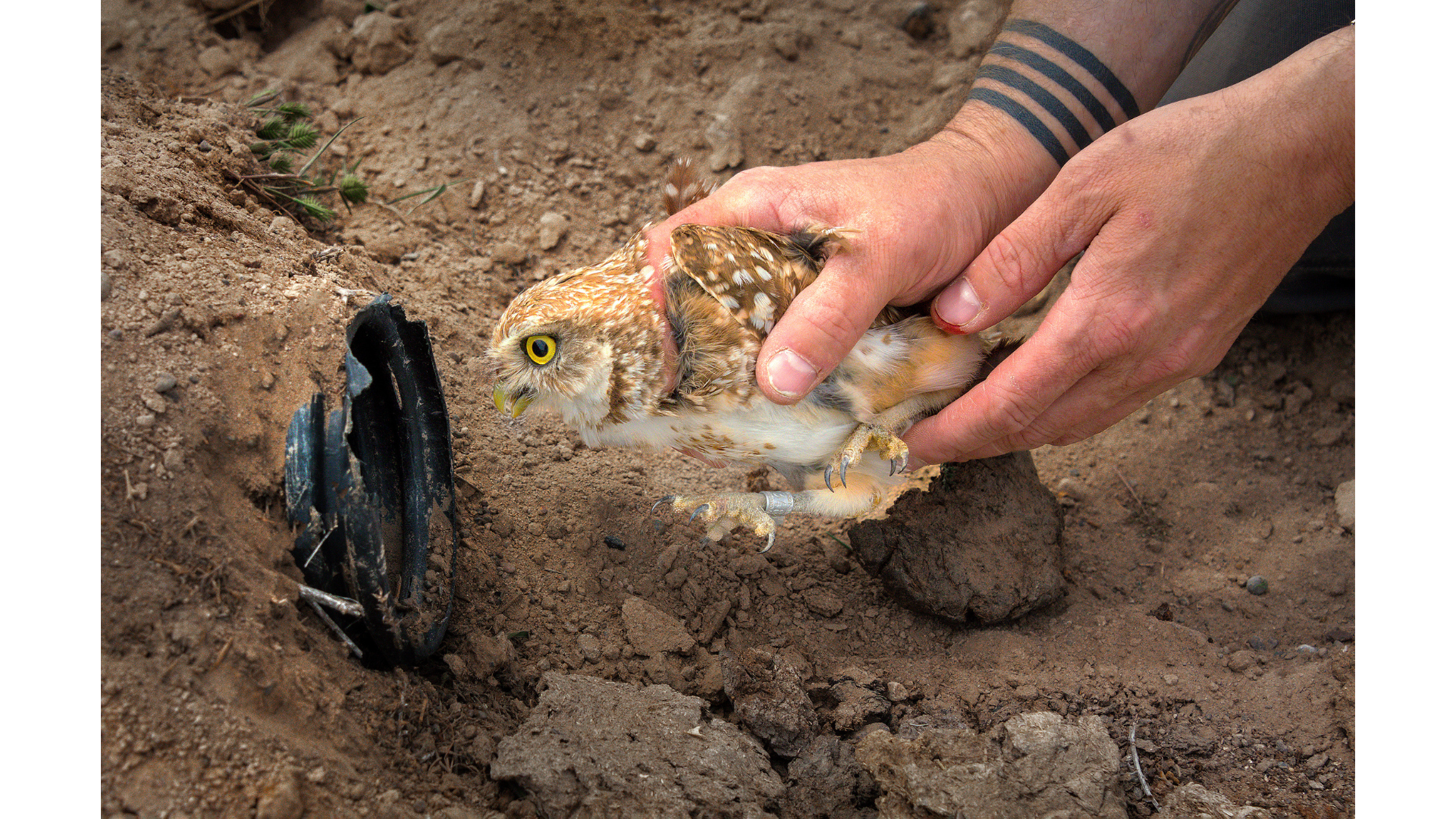
"Boise State University created a Raptor Research Center (RRC) to support graduate education for a unique Master of Science in Raptor Biology program and conduct research about birds of prey. One of their most prominent programs is the study of Burrowing Owls in a nearby National Conservation Area. The RRC students and faculty have placed over 300 man-made burrows in the high desert areas of the Conservation Area. Each year students and staff visit these man-made burrows to monitor nesting owls. They open the occupied burrows to count eggs, and then reopen them later to capture, obtain tissue samples, and apply leg bands to as many hatchlings and adults as they can. In this photo one of the researchers is returning one of the recently captured adult Burrowing Owls to a man-made burrow." —James Shane
Second place: James Falletti, Three generations of female birders
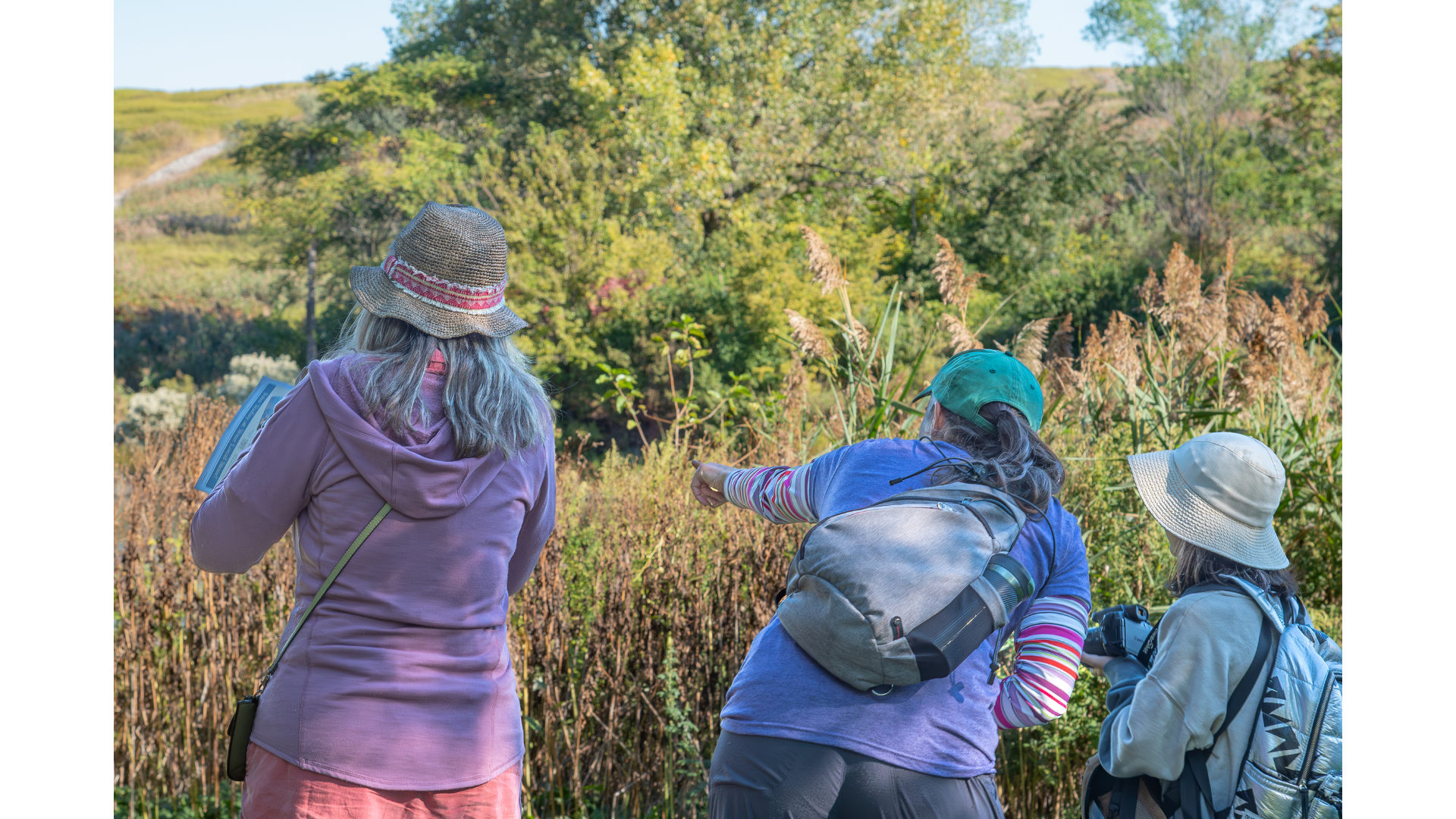
"This photograph, titled Generations, captures a powerful moment of three generations of female birdwatchers sharing in the joy of birding during a Bergen County Audubon Society (BCAS) walk at Richard DeKorte Park in Lyndhurst, NJ, during the peak of fall migration. More than just an image, this moment represents the enduring connection between nature, education, and conservation—a testament to the importance of fostering environmental awareness across generations.
In a world where technology often competes for our attention, nature remains an unparalleled classroom. Birdwatching offers a gateway into environmental education, encouraging participants of all ages to engage with the world around them. This image embodies the essence of Nature’s Classroom—where curiosity, observation, and appreciation for the natural world are passed down from one generation to the next. The presence of multiple generations highlights how conservation is not just about protecting habitats but also about ensuring that future stewards inherit a love and responsibility for the natural world.
The significance of female birdwatchers in this image further underscores a growing movement of inclusivity in birding and conservation. Women have long played pivotal roles in environmental advocacy, and through experiences like this, young girls are inspired to see themselves as both learners and leaders in the field. By engaging in birding walks, documenting their observations through photography, and sharing their discoveries, they are actively contributing to the legacy of conservation.
This photograph is not just about birdwatching—it is about the stories, knowledge, and passion passed down through generations. It is a reminder that every moment spent in nature, whether with binoculars or a camera, has the power to inspire, educate, and preserve our natural world for the future." —James Falletti
Third place: Aimee Tomcho, Yancey Birders Christmas Bird Count
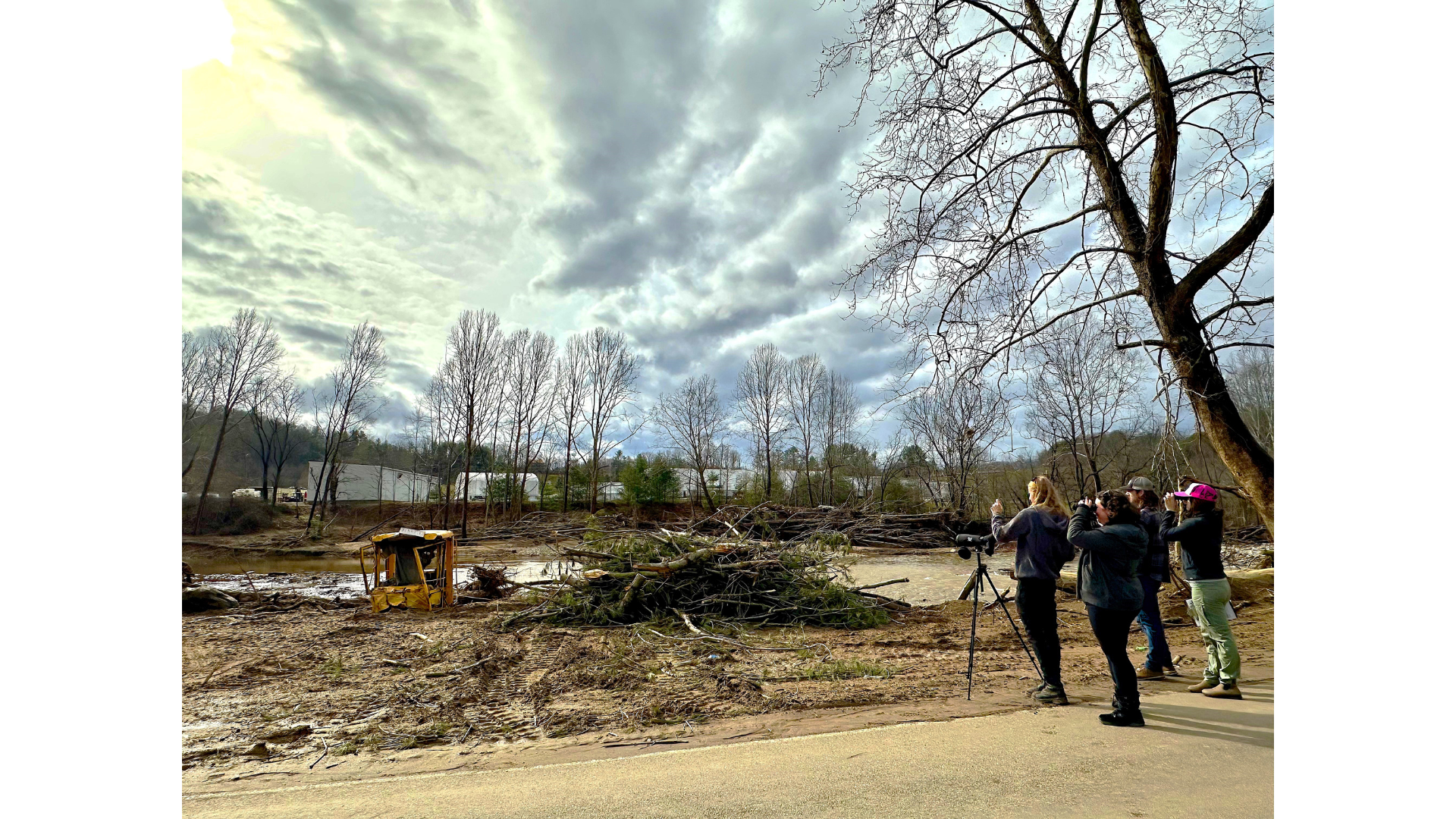
"I wasn't certain we'd have a group count this year. But each and every one of our birders enthusiastically stepped up when I sent a gentle email asking who may be willing to count this year. "I'll do it!", "Count me in!", "Me too!", "Thanks for recognizing a need to return to some sense of normalcy."
Together, exactly 3 months after the water flowed through our town 30 feet high, we braved the difficult sights we were all bound to see as we walked on rubble that were once were roads. Our Christmas Bird Count was simultaneously heartwrenching and uplifitng following the aftermath of Hurricane Helene.
It reminded me of what once was, those places and people of the past - some of which and whom are no longer with us, the impermanence of everything, and yet the enduring presence of our feathered friends who never cease to promise us a melodious future.
Birding has the power to bring people together and this year was no different - Yancey Birders Strong! With joy, we can share with whose who live in the county that the birds came out to greet us again this year despite also losing their homes. Yes, there were some species misses in the count and birds tended to flock to areas that were not bare earth, but in all, the results were comparable to years past, and for that I am grateful.
(Yancey County (Burnsville, NC) was the epicenter of Hurricane Helene devastation exactly 3 months to the day before we conducted our count. The landscape was forever changed and in so many places, the land is bare to bedrock. Estimates of 40% tree loss. All riverine corridors and vegetation are gone. Our local ebird hot spot (Cane River Park) is a barren wasteland of sand, rock, woody debris 20 feet high, and big trash like overturned vehicles. Words cannot describe the situation here, even now 100+ days later.
Bird behavior: larger flocks, low counts of seed eaters and large raptors, among others. However, the total species and number count is comparable to years past. Most of our regular birders came out to bird despite some having lost their homes. It was difficult but ended up being a bright light in so much darkness.)" —Aimee Tomcho
You can help support BirdNote's storytelling and future contests like these by giving a gift to BirdNote. Your support will help BirdNote continue producing stories that inspire people to take action for birds and our shared world. We appreciate any amount you choose to give.
Thank you to our generous sponsors:
Maven Optics, Vortex Optics, Rite in the Rain, Birds & Beans Coffee,
Bird Collective, and The Cornell Lab of Ornithology.

